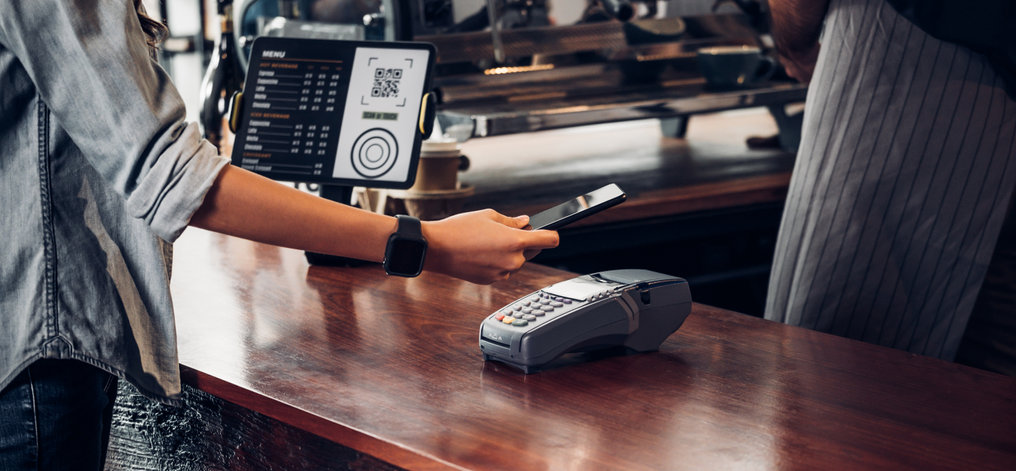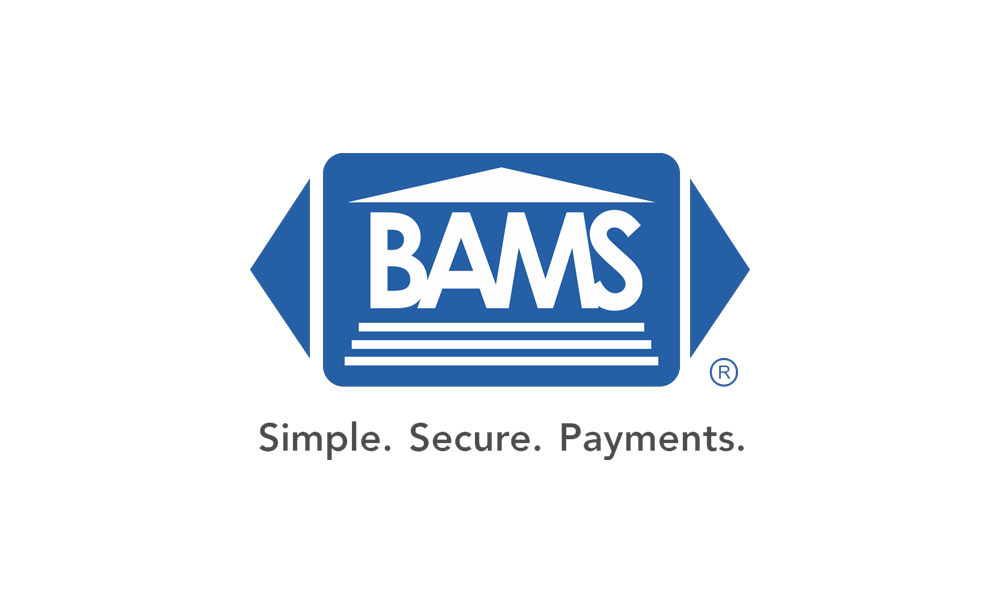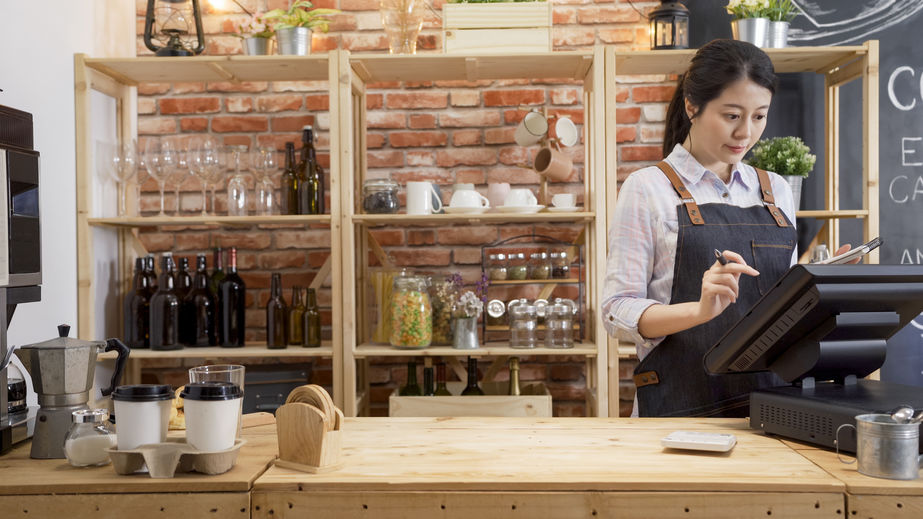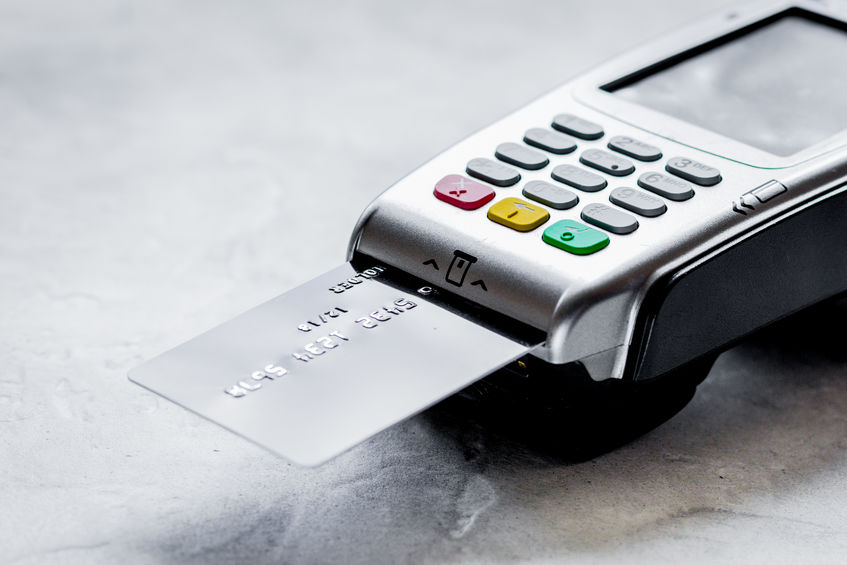What is a Retail POS System?
A retail POS, or point-of-sale system, is a combination of hardware and software designed to facilitate purchases at a checkout counter in retail and dining. A POS effectively automates most of the functions of an old cash register. Rather than having to punch in a product’s information and price and manually apply taxes, a POS user simply scans the product’s barcode and the POS does the rest in an instant, making it faster and easier for customers to pay and for cashiers to do their jobs accurately. The POS also performs a number of other functions, ranging from inventory control to employee tracking and more.
The following is a quick breakdown of the various pieces of hardware that make up most modern retail POS systems and how POS software makes checkout a faster, easier, more precise experience.
Retail POS Hardware
Scanner
A sale through a POS generally starts by running a product through a barcode scanner that automatically pulls up the product’s data so that the system can calculate the price. Scanners are a practical need, but product information can also be typed into all POS systems manually in case a barcode doesn’t work for any reason.
Computer / Mobile Device
All retail POS systems run on a computer system or mobile device that allows the software to run. While POS systems once ran on bulky desktop computers, today, off-the-shelf tablets and self-contained systems are increasingly becoming the norm. Some retail POS systems can be installed on any Android or iOS device, and in other cases, systems run on proprietary hardware, like the proprietary tablets provided by Toast POS.
Payment Card Reader
Every retail POS integrates with a payment terminal that allows debit and credit card payments to be accepted. All card readers today need to accept chip-card insertions, but in the wake of the global pandemic, where minimizing contact became a top priority, most customers demand tap payments, as well. Luckily, most POS systems can integrate with a wide variety of payment terminals, making upgrading to the most current options an easy process.
Cash Drawer
A retail POS centralizes counter sales and streamlines card payments, but it isn’t just for electronic transactions. A cash drawer is tied into the system as well, so that all cash sales are tracked and automatically reconciled in the books with the rest of a merchant’s electronic transactions. The ability to track cash sales accurately makes a retail POS an important system even for businesses that try to avoid card sales.
Receipt Printer
The final piece of the common retail POS setup is a small printer that can quickly and easily print out detailed receipts. While a receipt printer is common, it isn’t a must, and some merchants forgo stand-alone printers in favor of payment terminals with built-in printers. Payment terminal receipts are generally simpler and less customizable than receipts from stand-alone printers, but they do the job and minimize costs.
Retail POS Software
Transaction Processing
Retail POS software’s primary function is enabling transactions. When an item is scanned or entered into the POS, the software pulls the key information about the item from the product database, calculates the price across all items scanned, applies any necessary taxes, applies any available discounts, and then sends the final total to the payment pad for customer action. It takes seconds, and the cashier is mostly along for the ride. Allowing the POS to handle everything between scan and payment automatically not only speeds up transactions, it also removes most of the potential for human error, which can be a costly leak at the cash register.
Inventory Control
A retail POS is also a powerful inventory management tool. Because a store’s complete inventory is entered into the POS database, every time a product is sold, the outgoing merchandise is automatically subtracted. The system can then warn users when inventory on certain items is getting low and, in some cases, can even automatically trigger reorders on certain items.
Staff Login
Retail POS systems enable multiple user accounts so each member of a merchant’s staff can log in and be tracked while working the cash. This is especially important for businesses with a large number of cashiers or where more than one person may operate a single checkout over the course of a day. It’s also a key function in dining environments where each server needs to be able to track their own tables and sales, often on a single shared POS terminal.
Reporting
Point-of-sale software also provides users with easy-to-generate reports on all activity going through the POS. That makes it extremely easy for business owners to quickly analyze past sales performance, employee sales history, and much more. Retail POS systems also output reports designed specifically to streamline accounting. Many integrate directly with leading accounting software like QuickBooks, automating a large portion of the bookkeeping process and reducing administrative work.
While a retail POS can do a lot to make running the cash register easier, more accurate, and more efficient, a point-of-sale system can’t accept transactions on its own without a merchant account. A merchant account is the special bank account businesses need to be able to receive the funds from credit card transactions. A good merchant account, like the ones offered by BAMS, will provide the merchant with wide scale compatibility across as many top POS systems as possible, maximizing merchant choice and potentially minimizing costs.
In addition to integrating with all the top point-of-sale systems on the market, BAMS merchant accounts also provide merchants with the lowest fees in the industry. To find out more about how your business can improve your checkout experience with a retail POS and save money in the process, reach out to a member of the BAMS team or start your free five-point price comparison today.




